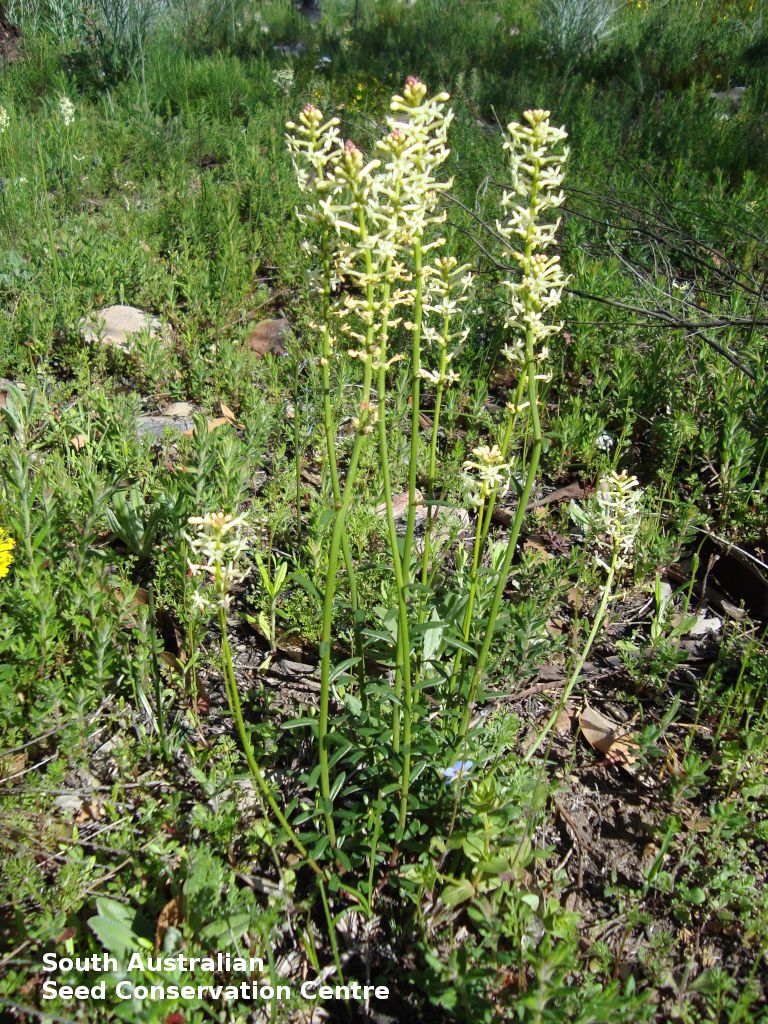
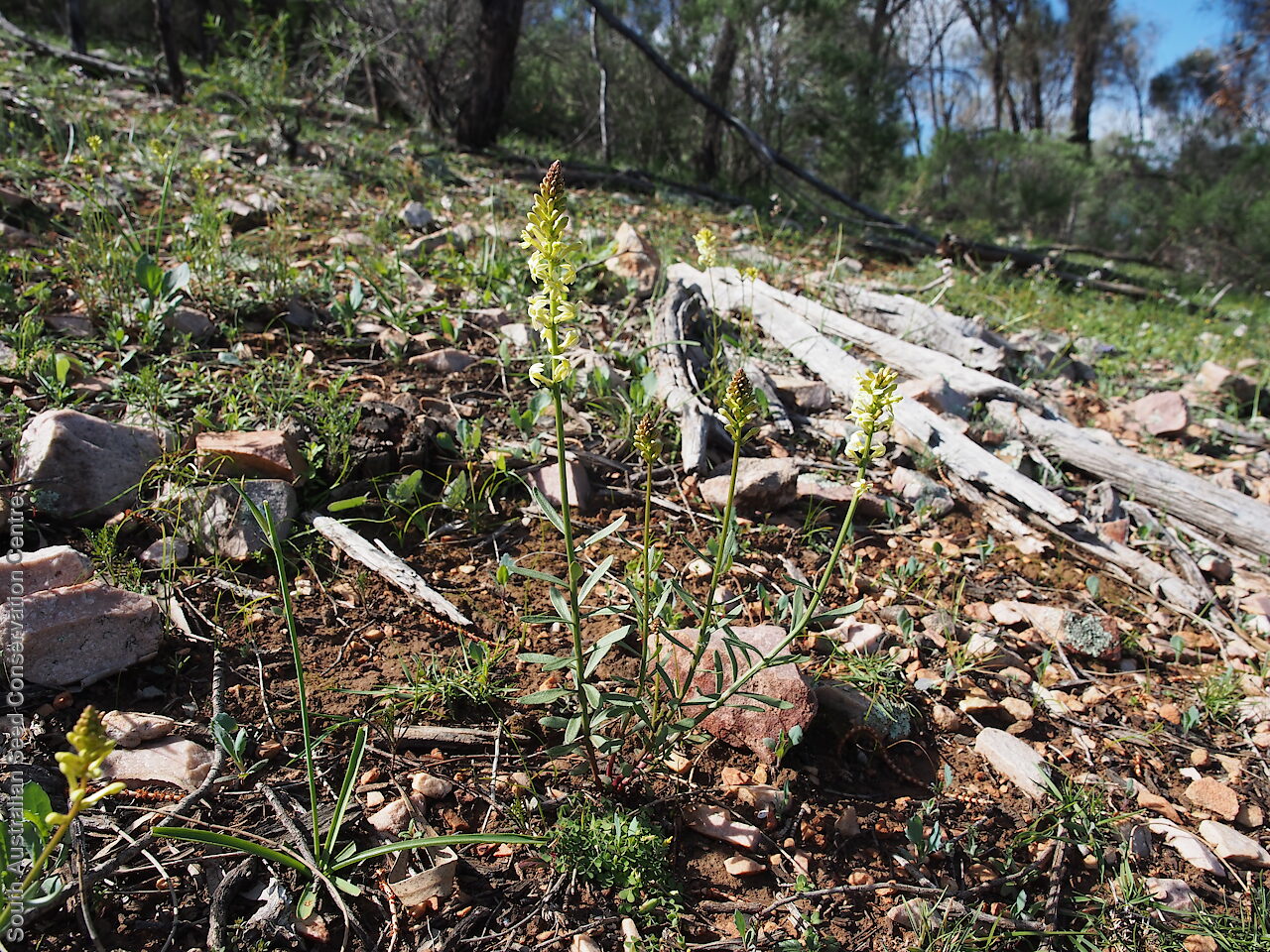
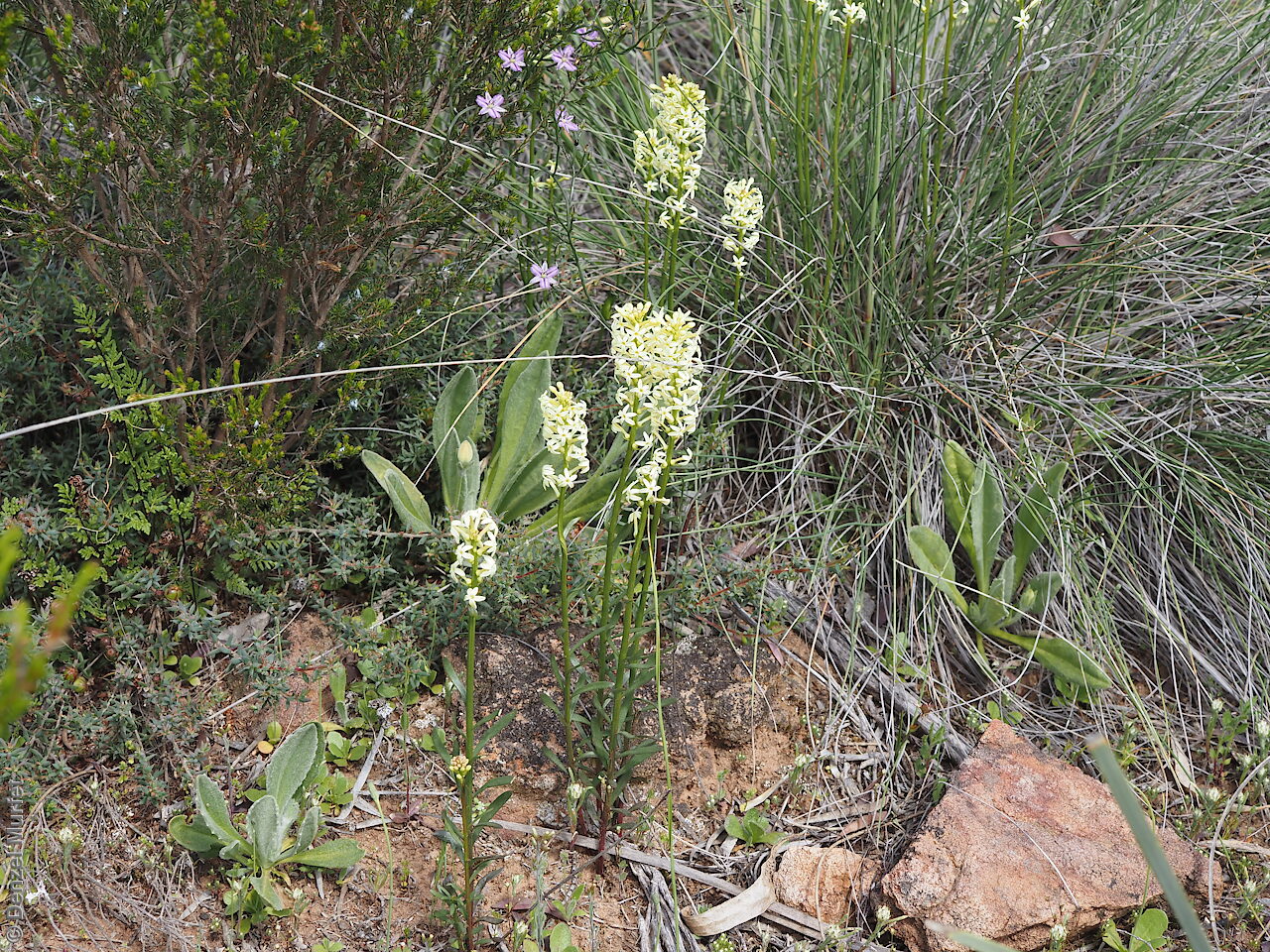
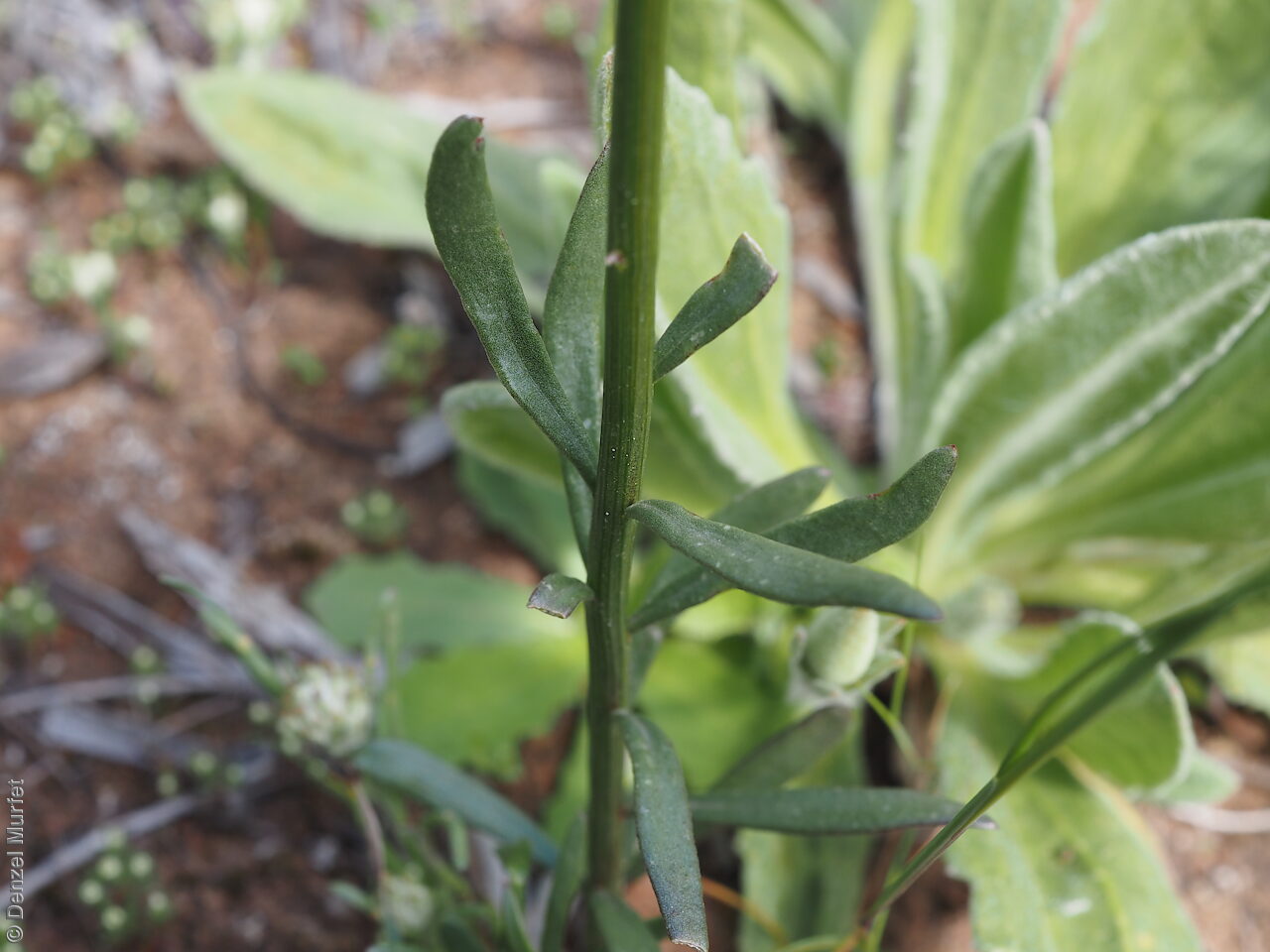
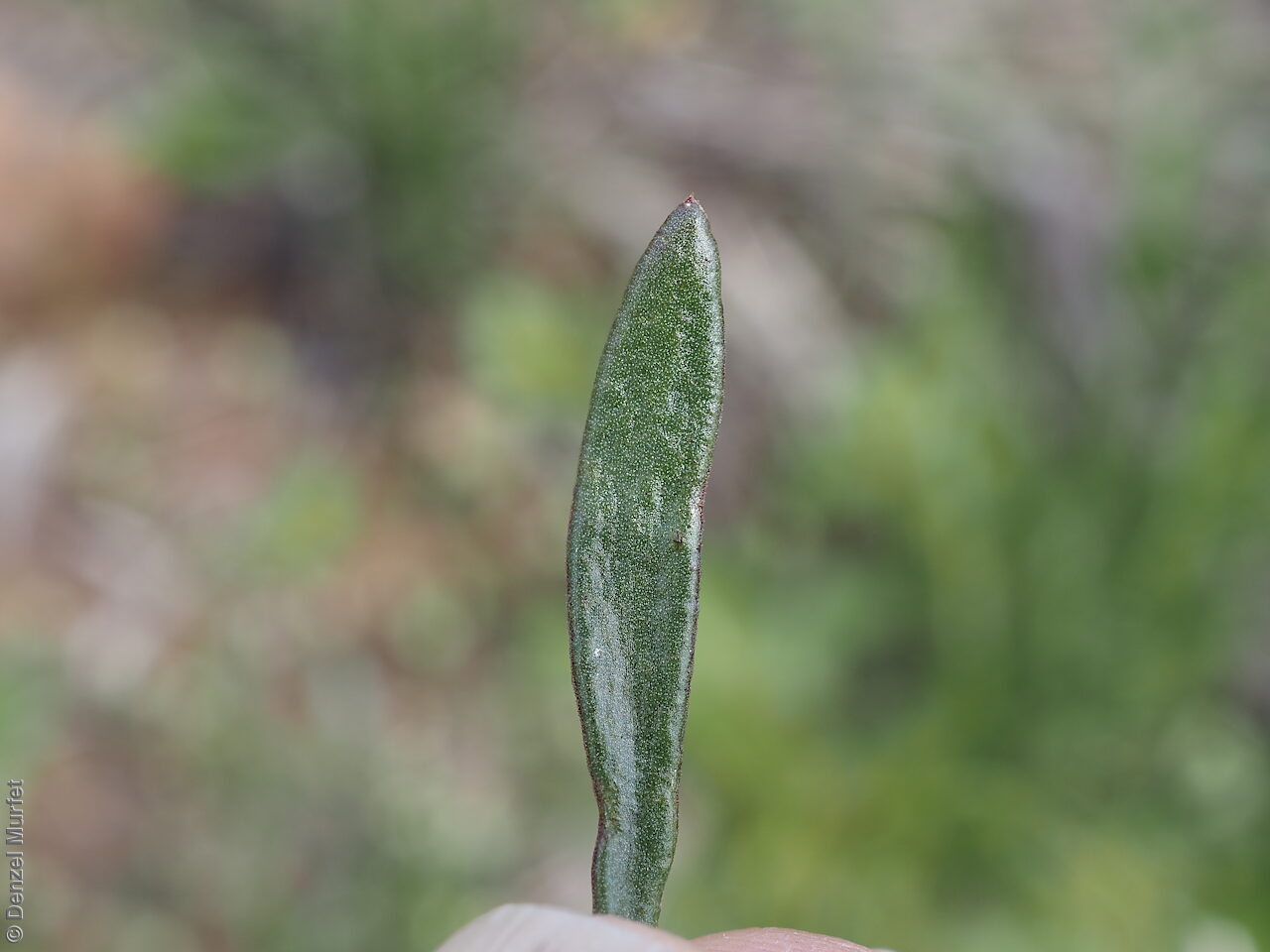
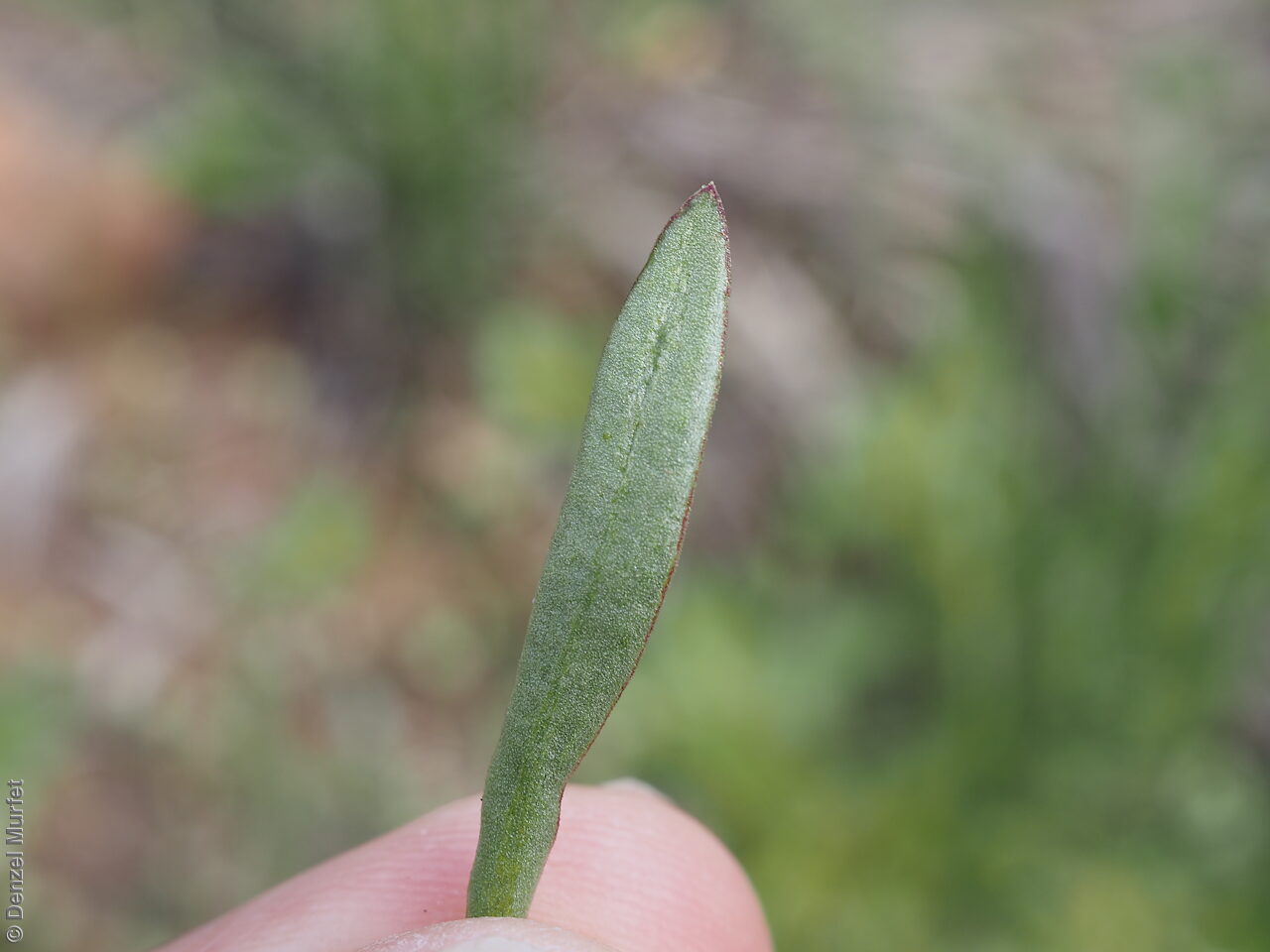
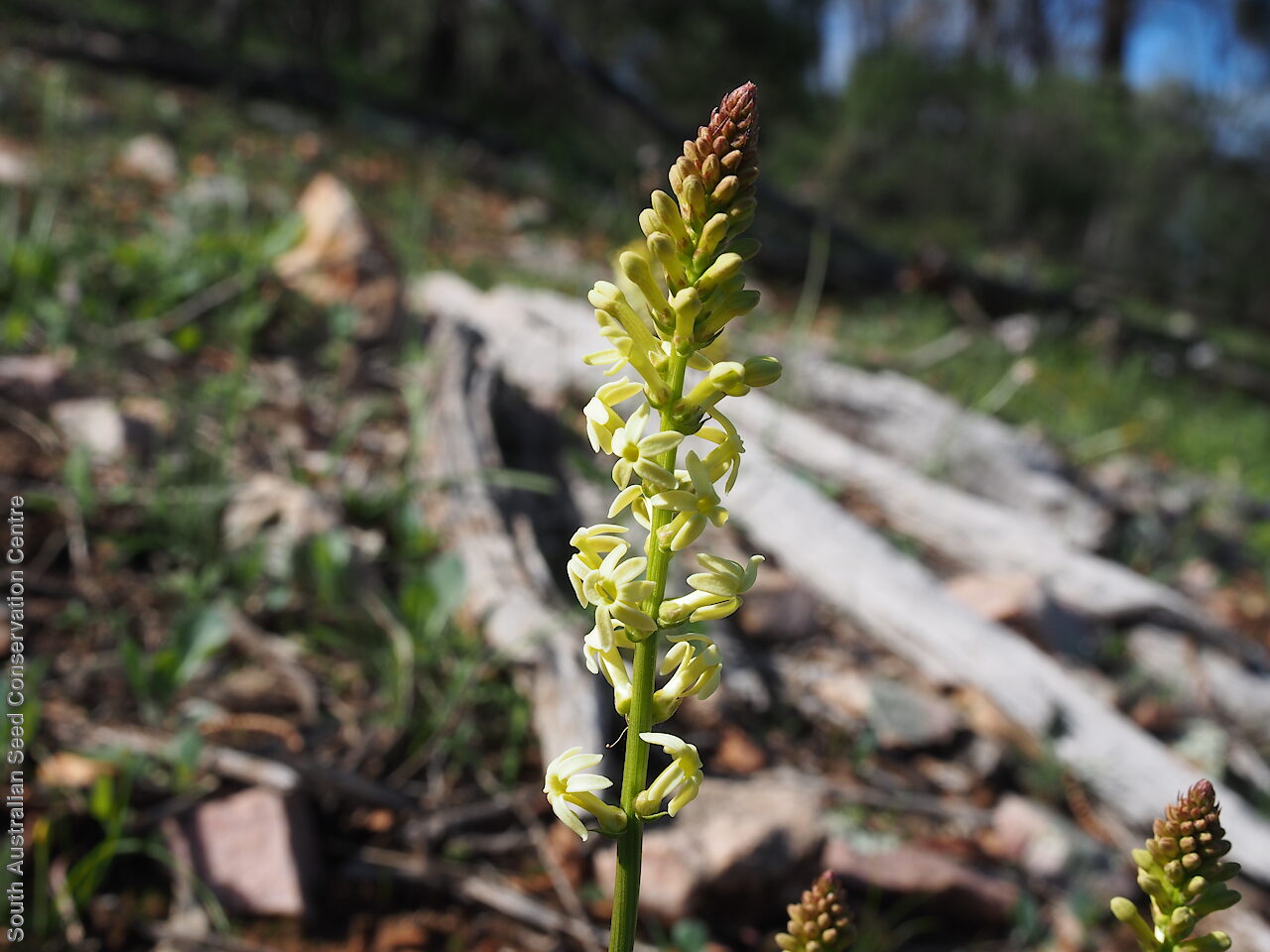
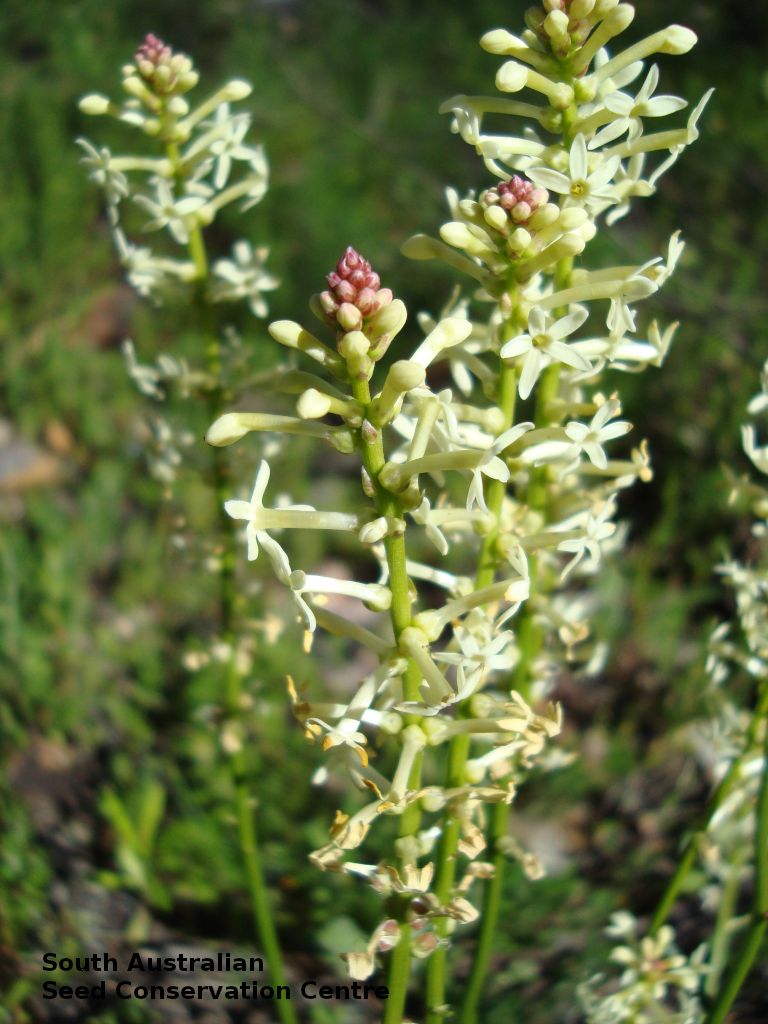
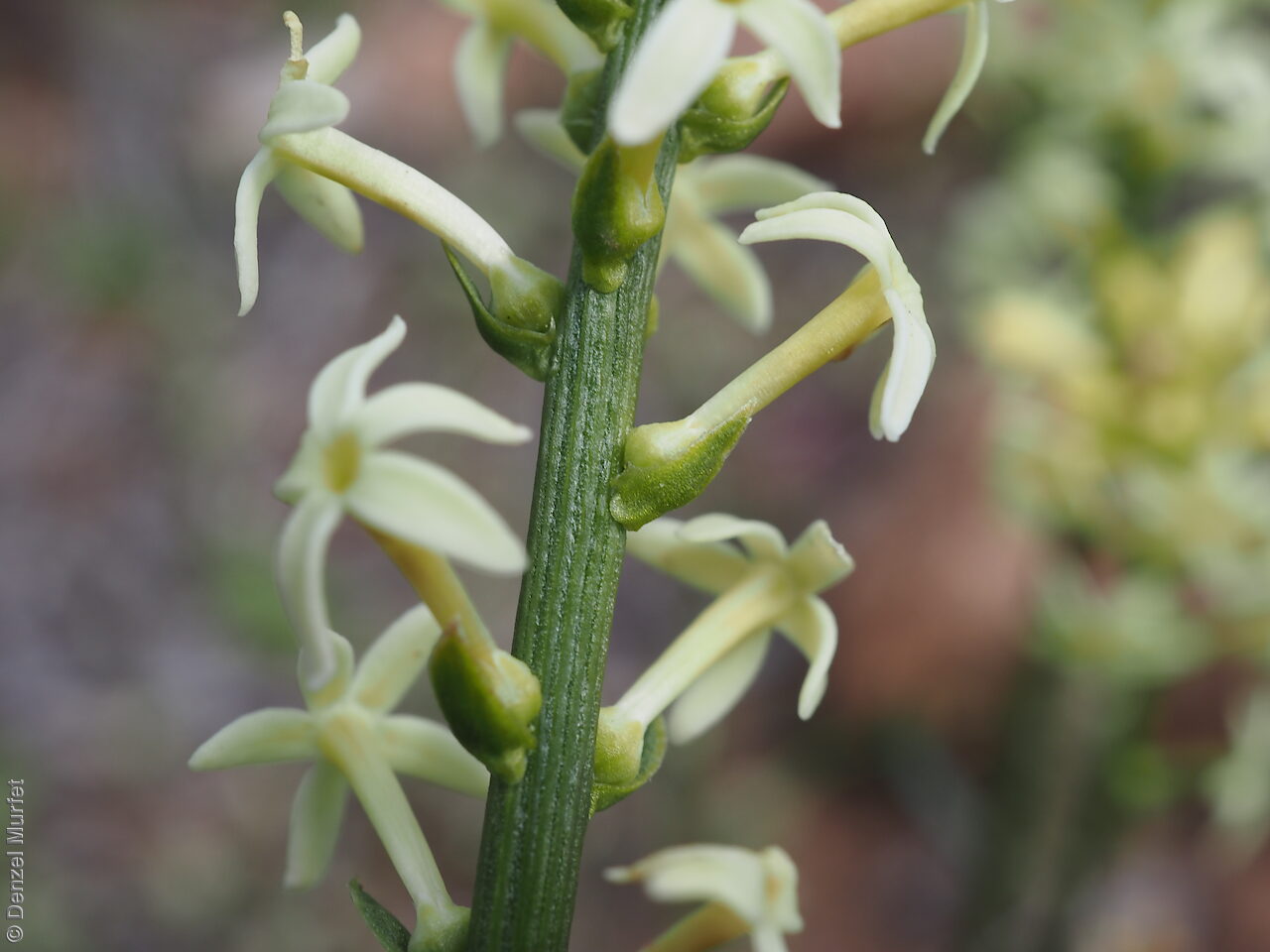
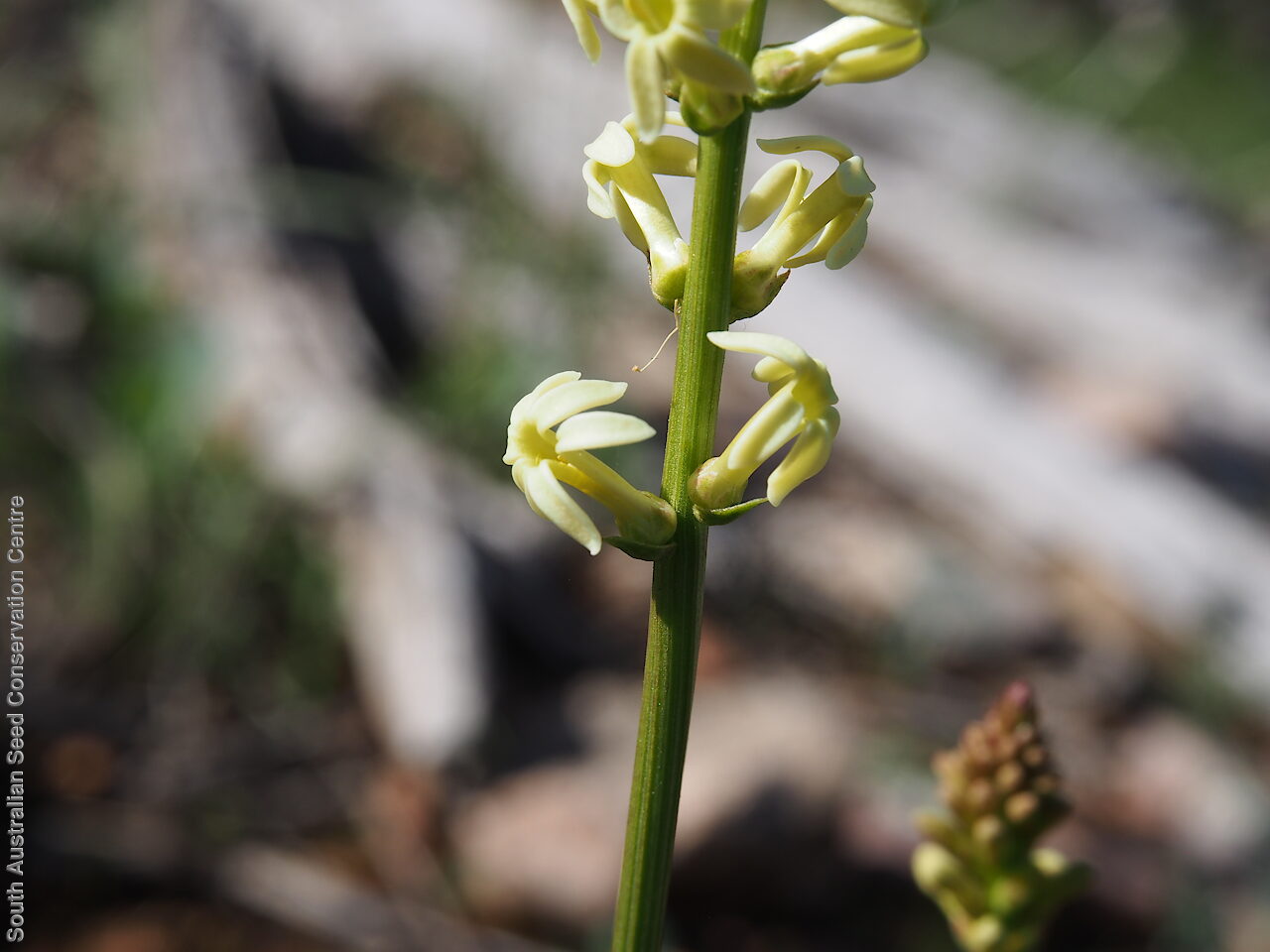
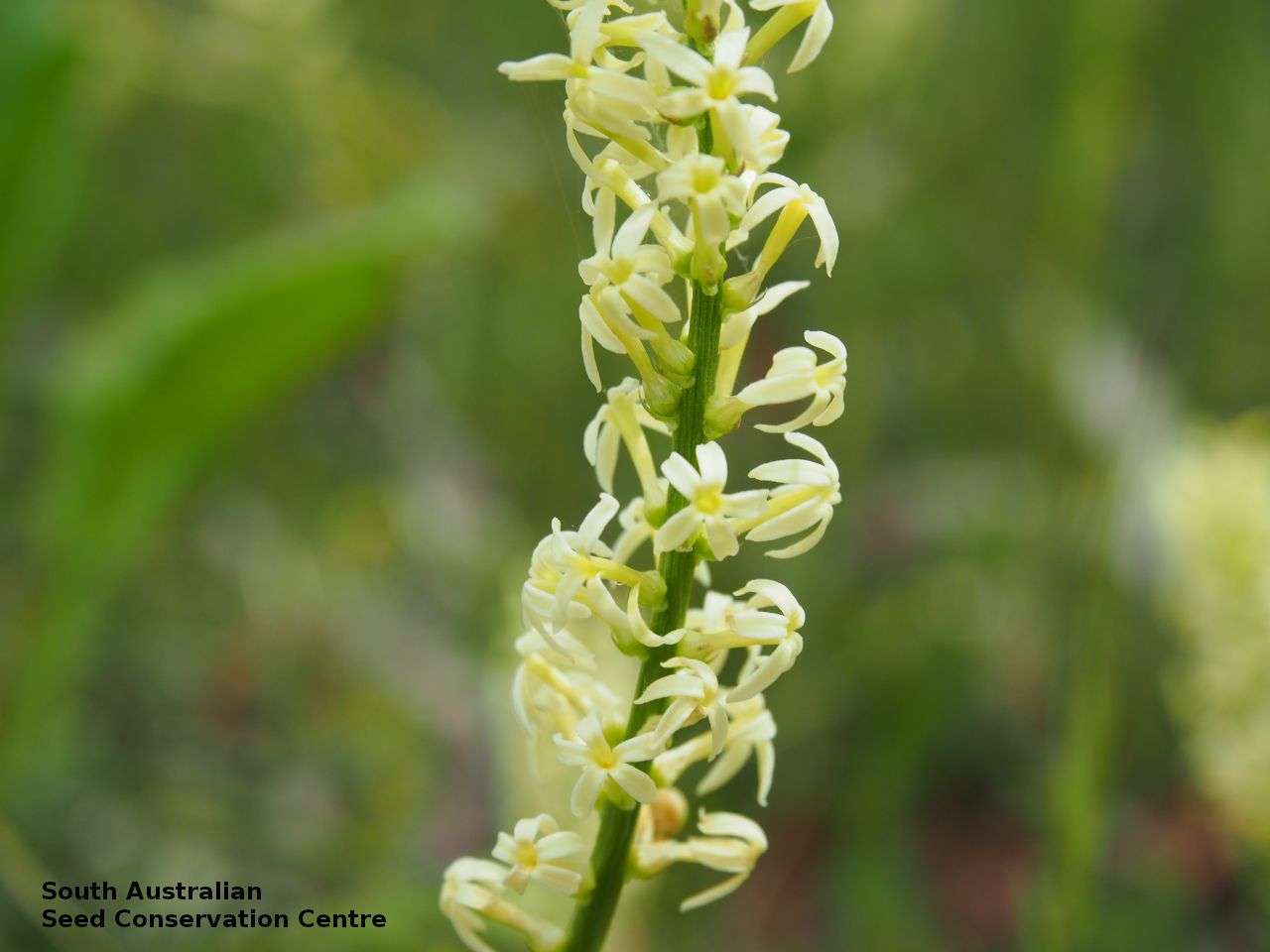
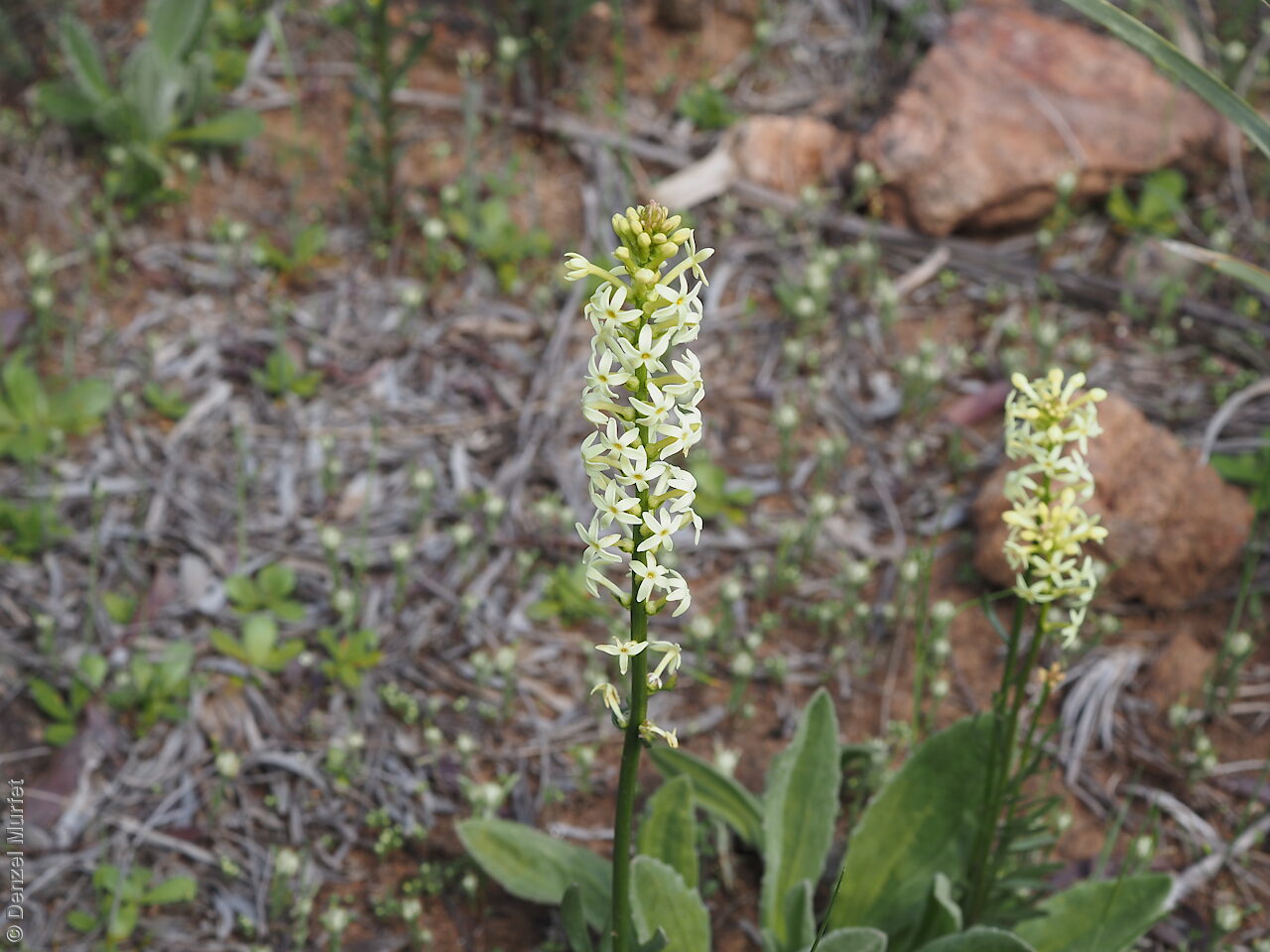
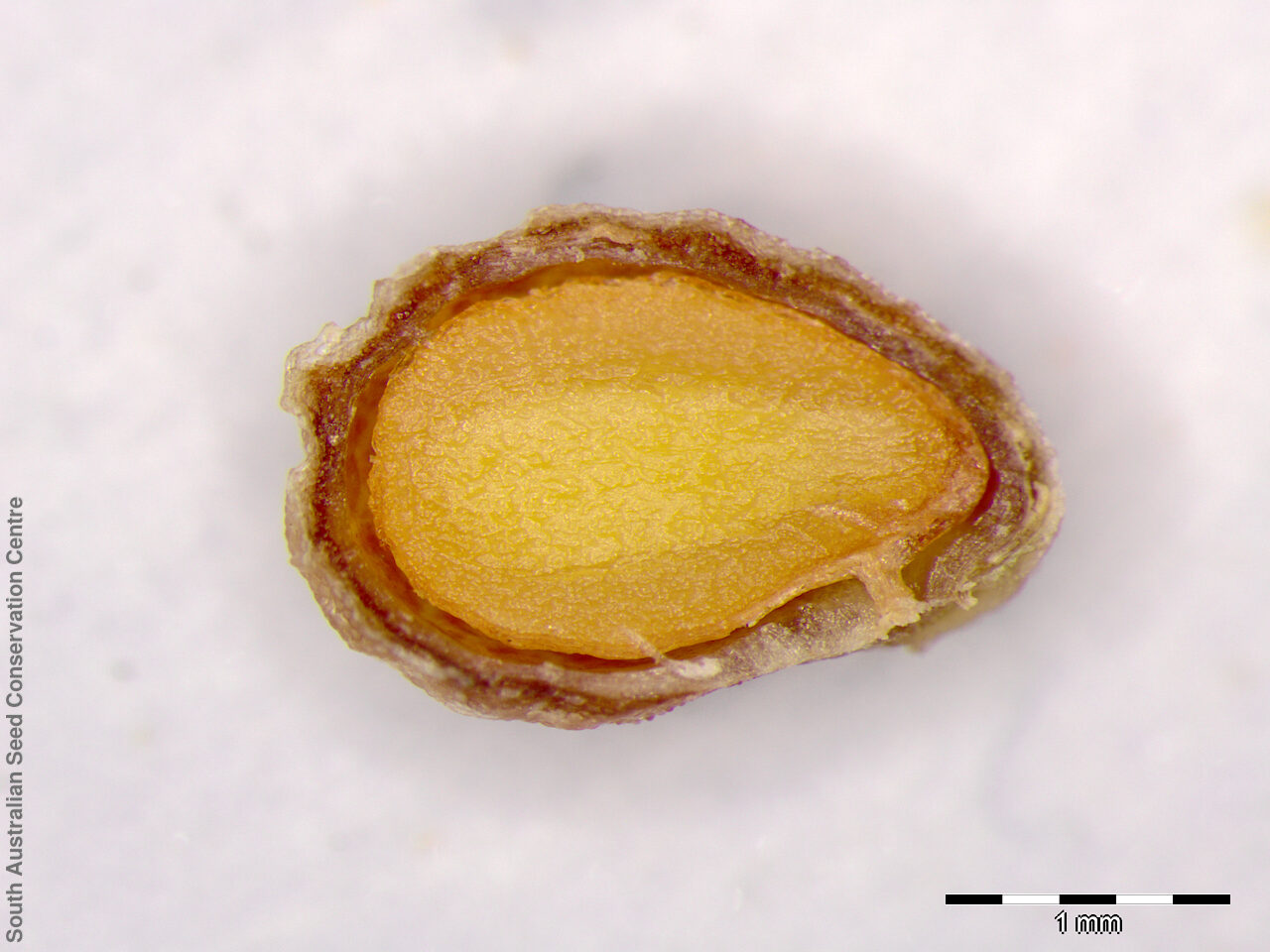
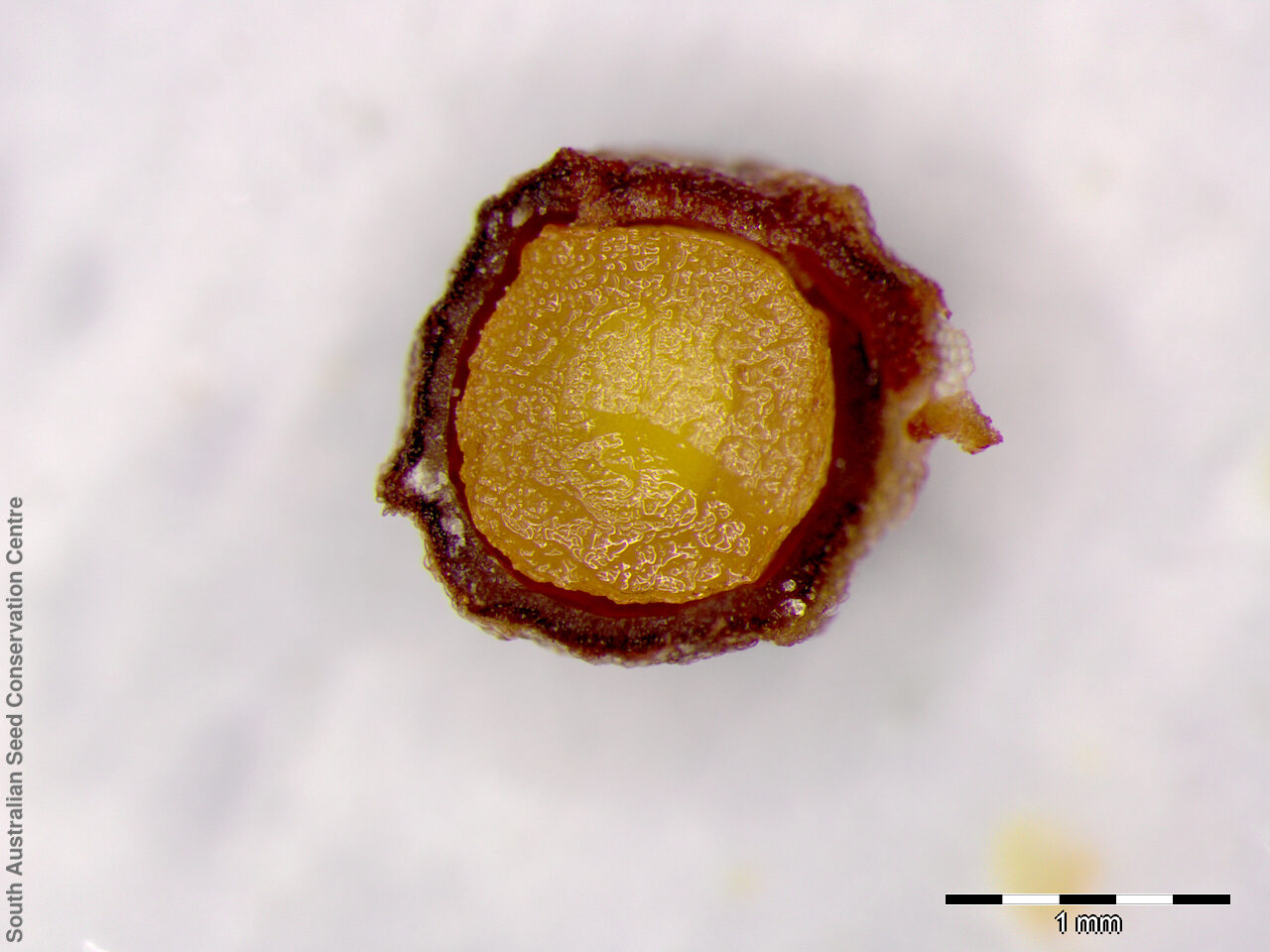

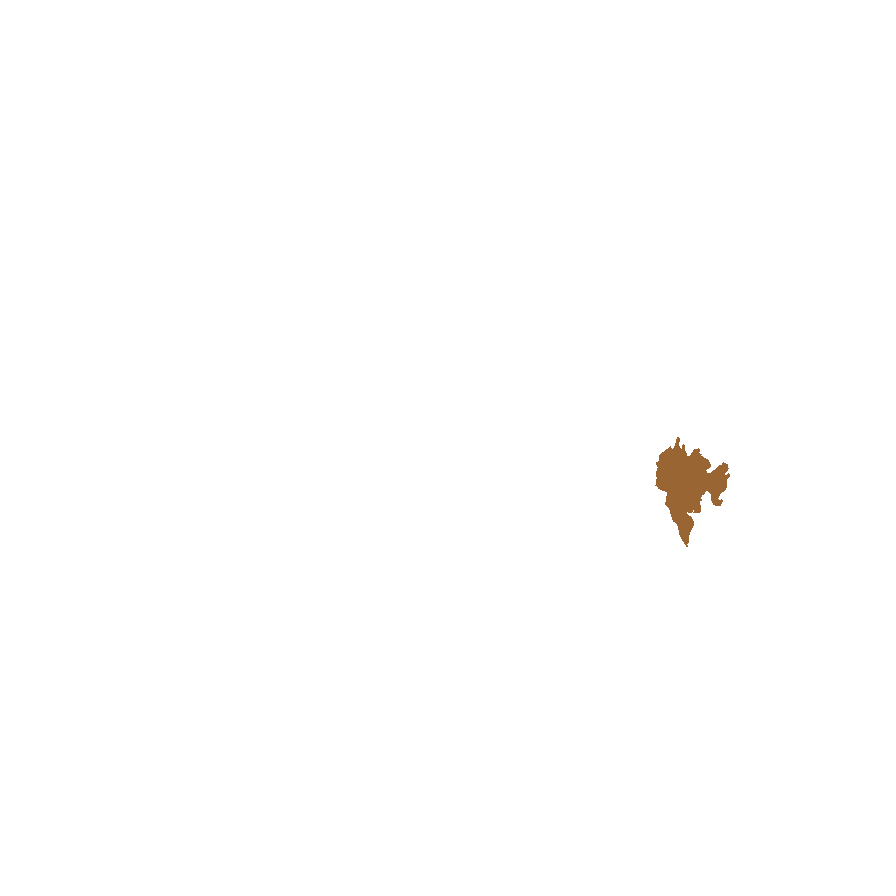
Botanical art
Prior names
Stackhousia flava, partly
Common names
Creamy Stackhousia
Creamy Candles
Etymology
'Stackhousia' after the Cornish botanist and artist John Stackhouse (1742-1819) and Greek 'mono' single, 'gyne' woman; single ovary.
Distribution and status
Found in the Southern Flinders Ranges. Common on loam or sandy-loam soils, in sclerophyll woodland.
Herbarium region: Flinders Ranges
NRM region: Northern and Yorke
AVH map: SA distribution map (external link)
Plant description
Glabrous perennial to 50 cm high. Leaves linear to lanceolate; rarely broad-elliptic; to 30 mm long, 2�4 mm wide. Inflorescence a dense cylindrical spike; corolla cream-white to light-yellow; the tube 5-8 mm long; the lobes 3.2-5.4 mm long. Flowering July - December. Fruits are fruit a non-fleshy schizocarp; 3 seeded Seeds are seed broad-obovoid to broad-ellipsoid; green-brown, 1.5�3 mm; rugose to reticulate, the basal cavity shallow Seed embryo type is straight
Seed collection and propagation
Collect seeds between November and December. Remove flower spikes with mature seeds and store in until dry. Pass seed through sieves and aspirate to remove unwanted material Germination 80%, imbibed on 1% w/v agar for 5 weeks at 15�C. Germinated on 1% w/v agar supplemented with 250mg/L Gibberellic acid, 8/16 dark/light, 15�C. See http://data.kew.org/sid
| Location | No. of seeds (weight grams) | Number of plants | Date collected | Collection number Collection location | Date stored | % Viability | Storage temperature |
|---|---|---|---|---|---|---|---|
| MSB | 1,660 (6 g) | 60 | 17-Nov-2005 | MKJ148 Murray | |||
| BGA | 2,500 (7.92 g) | 100+ | 26-Nov-2008 | DJD1290 Flinders Ranges | 20-Jul-2009 | 96% | -18°C |
Number of plants: This is the number of plants from which the seeds were collected.
Collection location: The Herbarium of South Australia's region name.
% Viability: Percentage of filled healthy seeds determined by a cut test or x-ray.